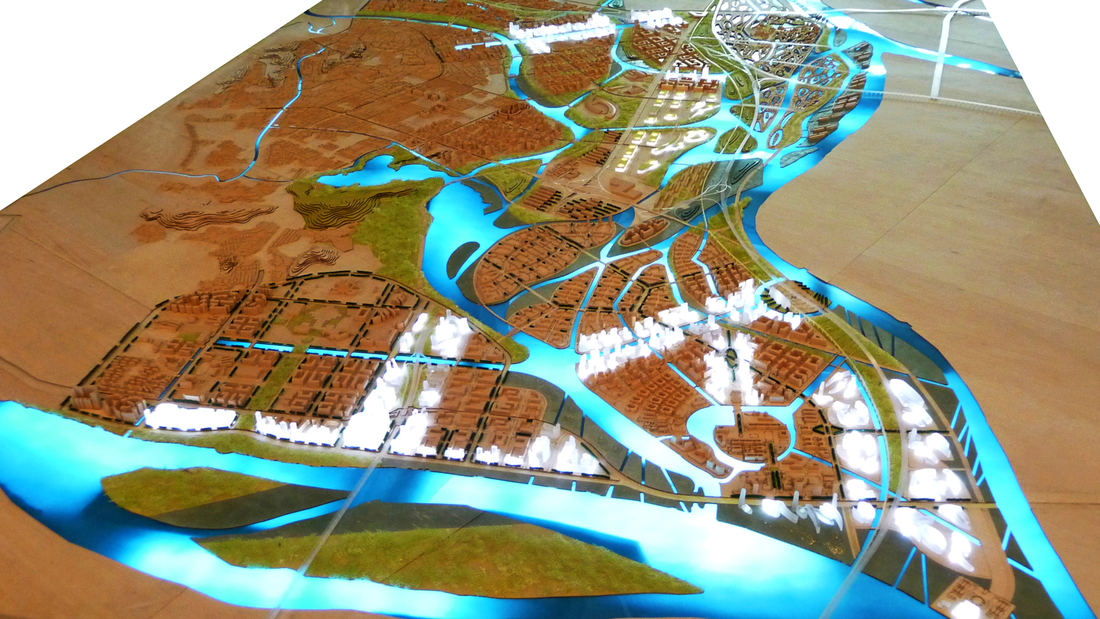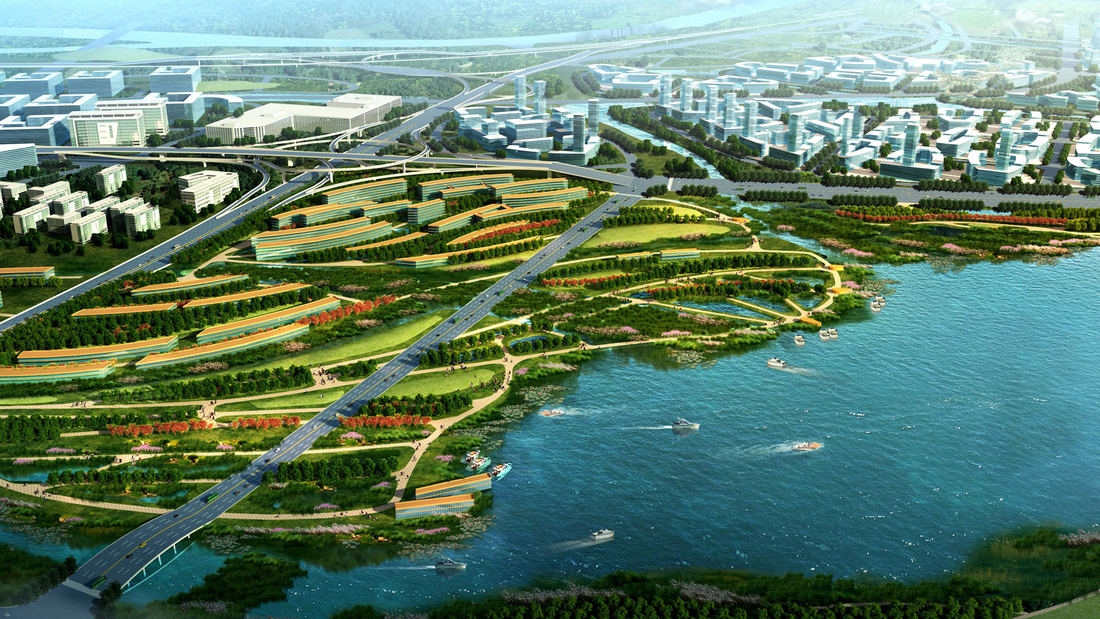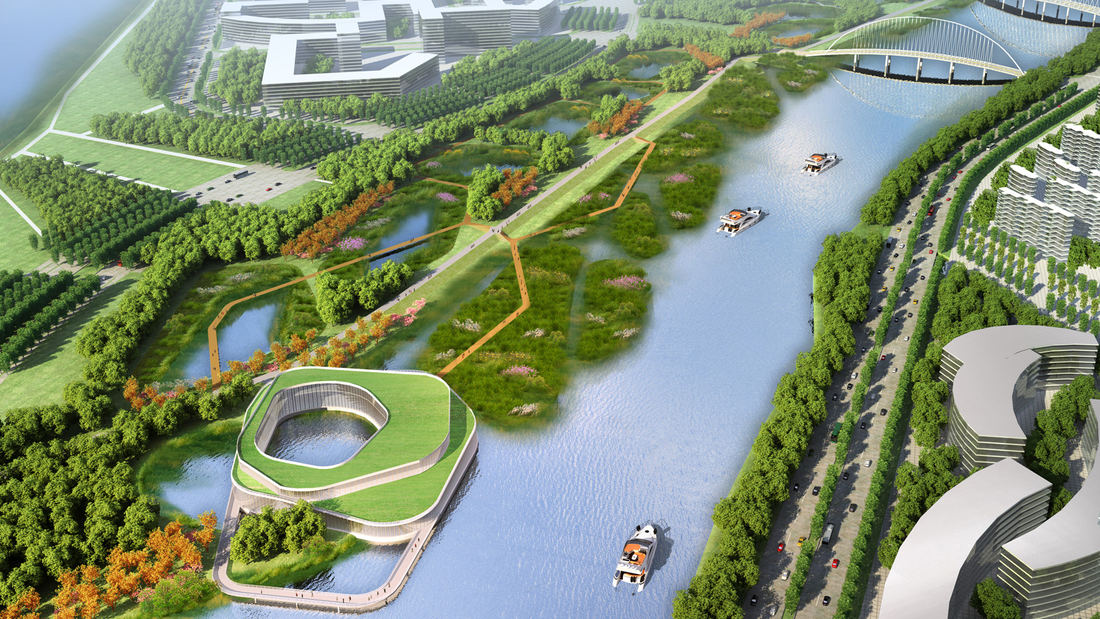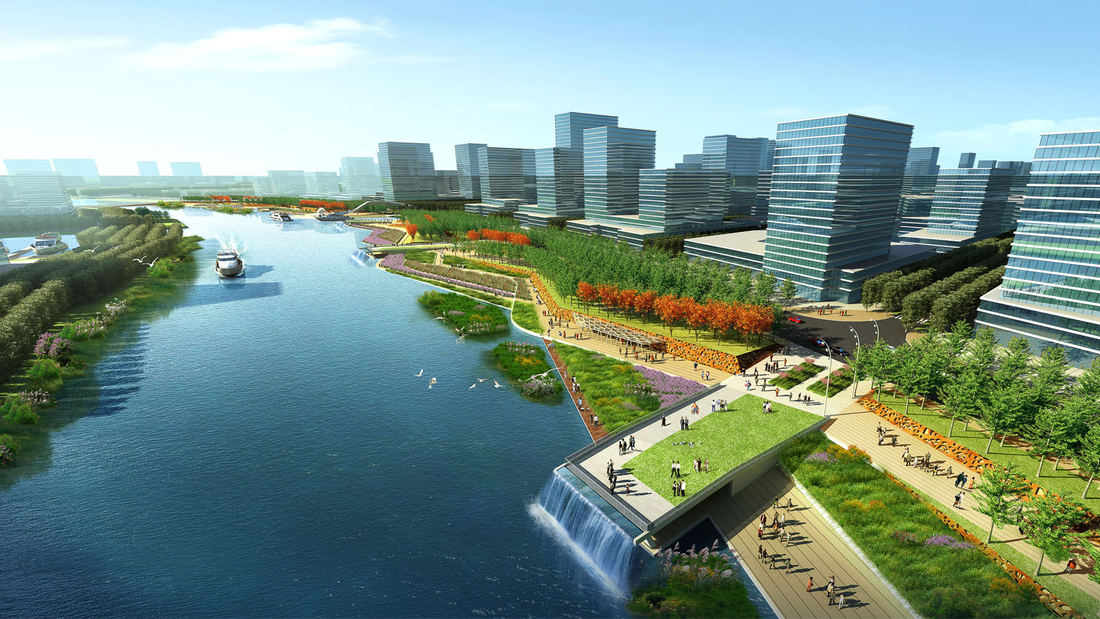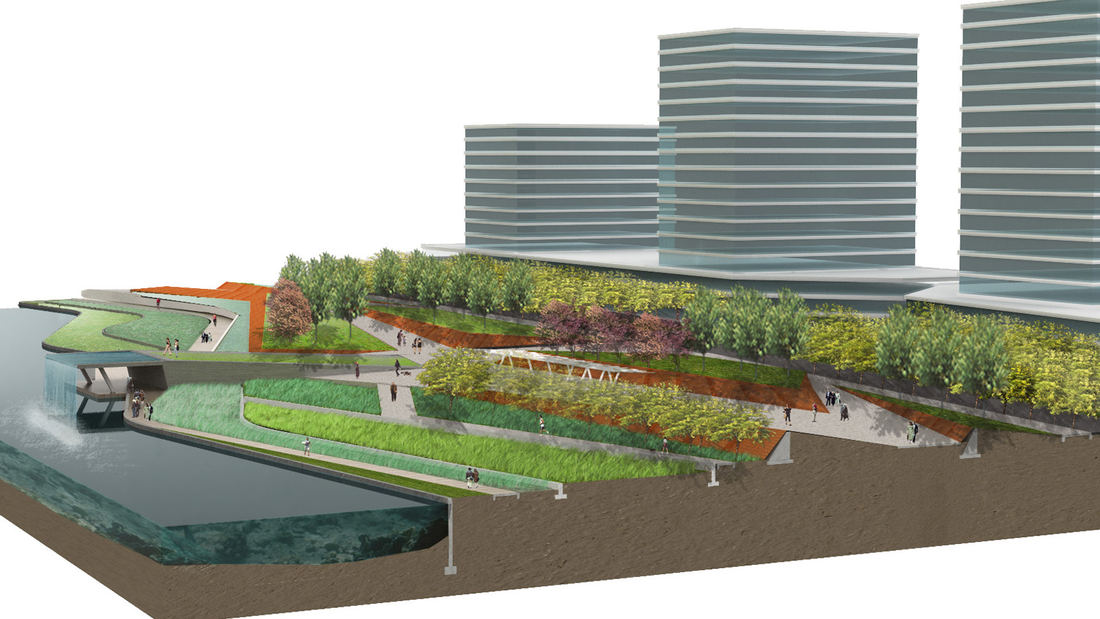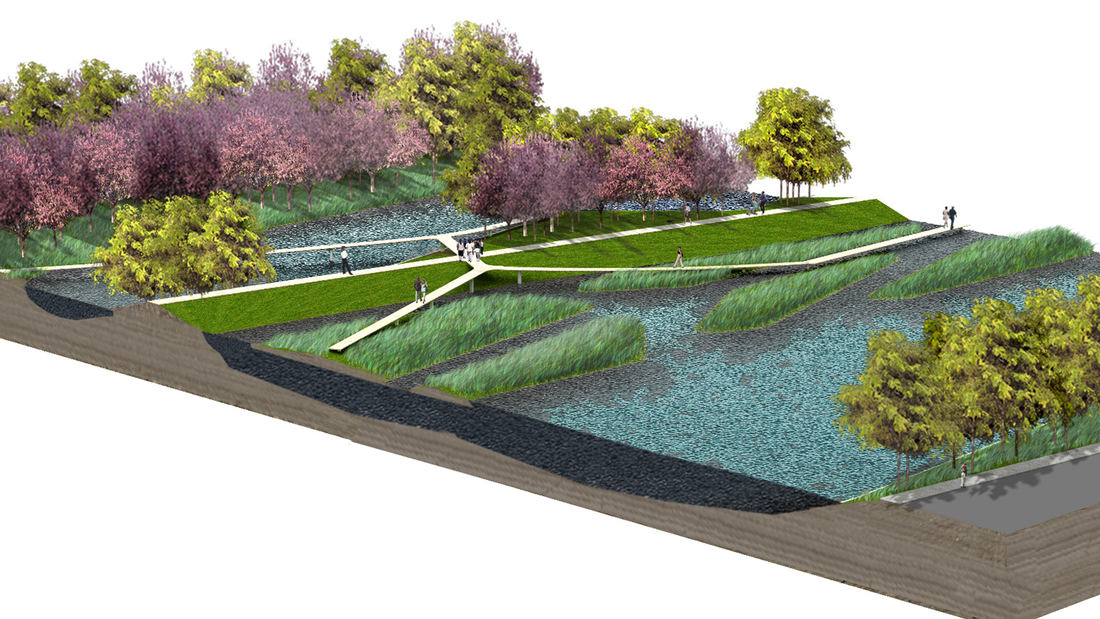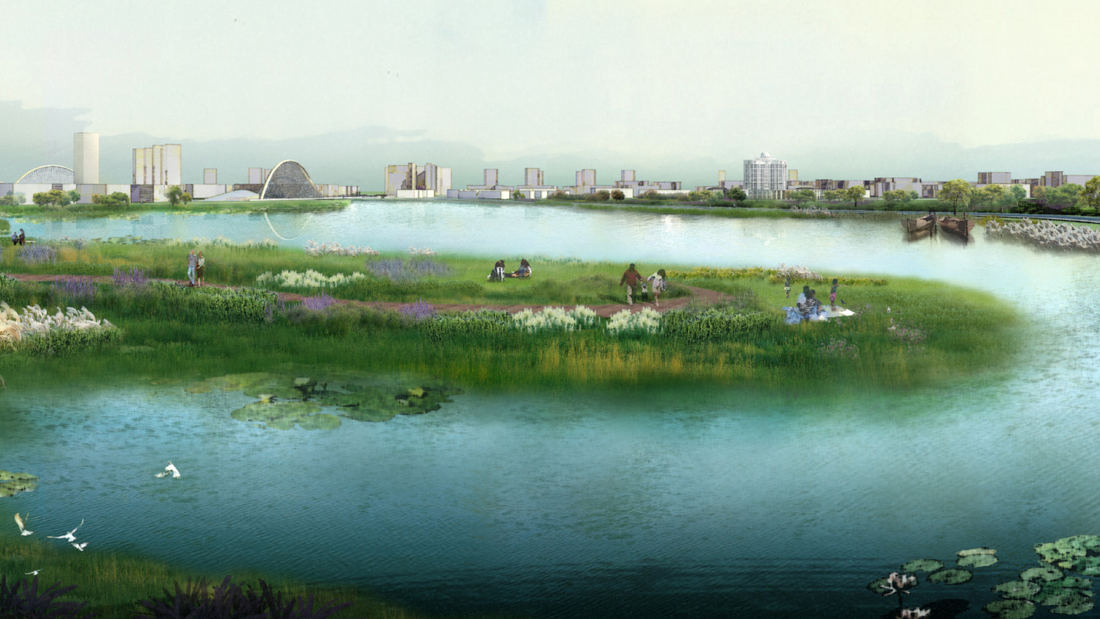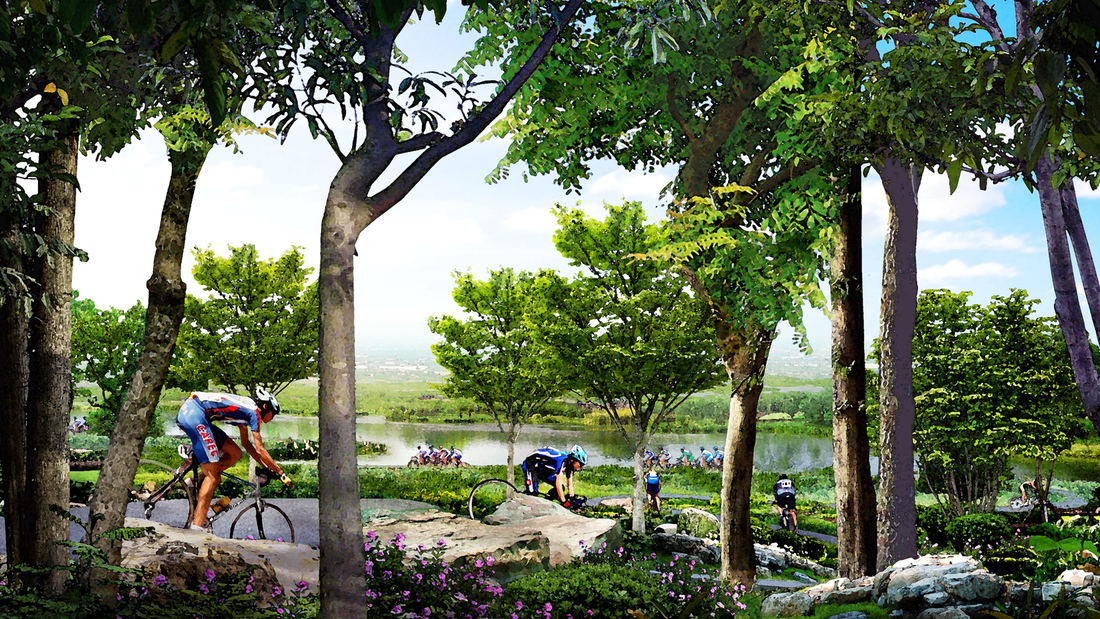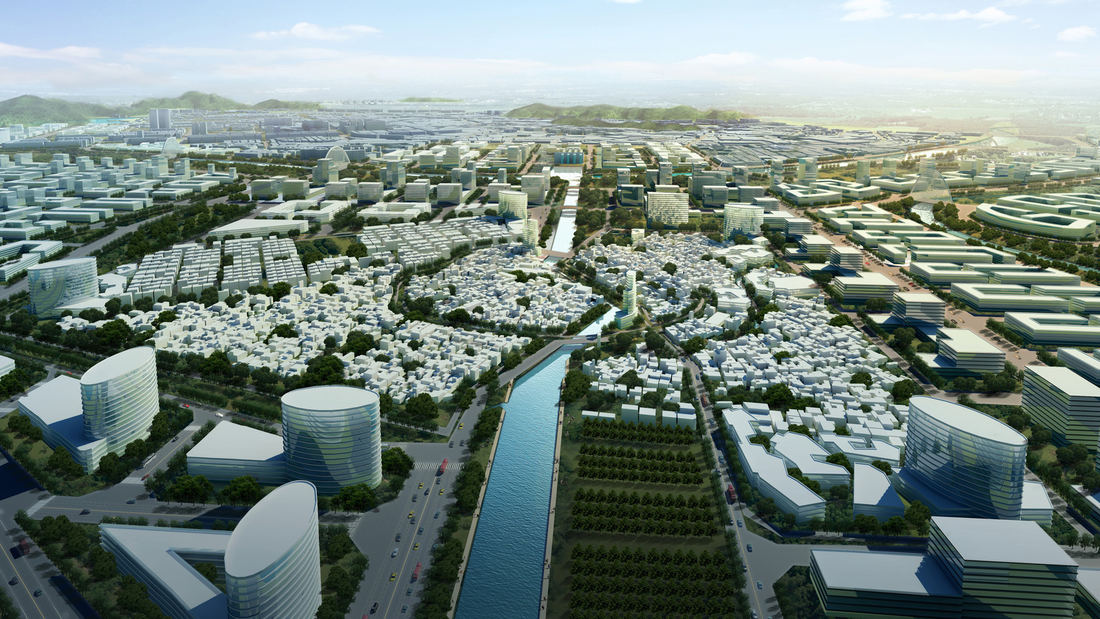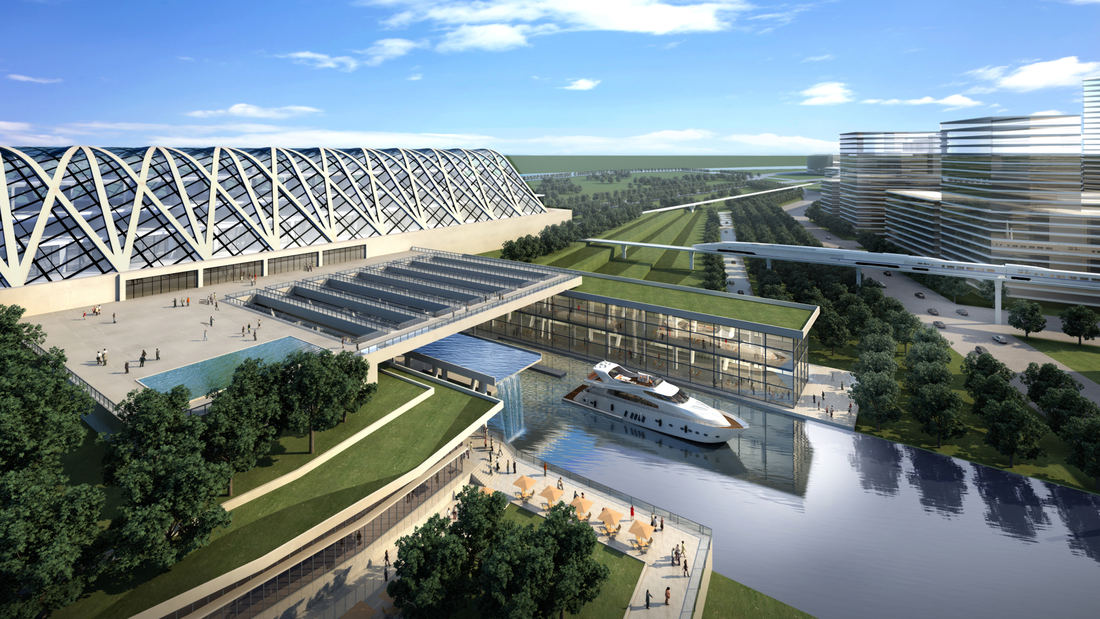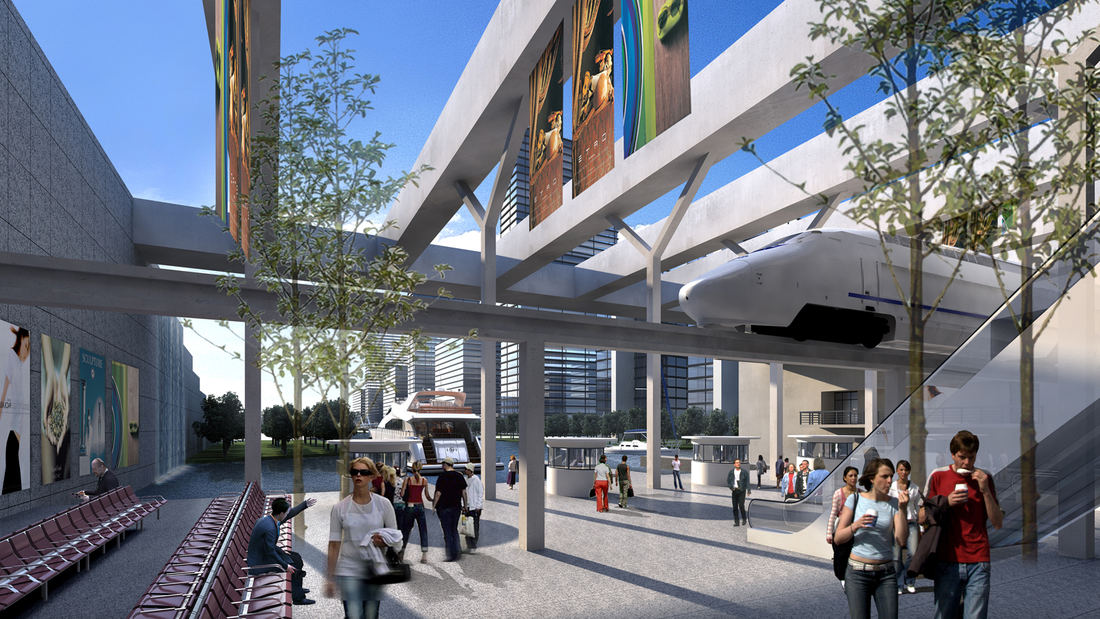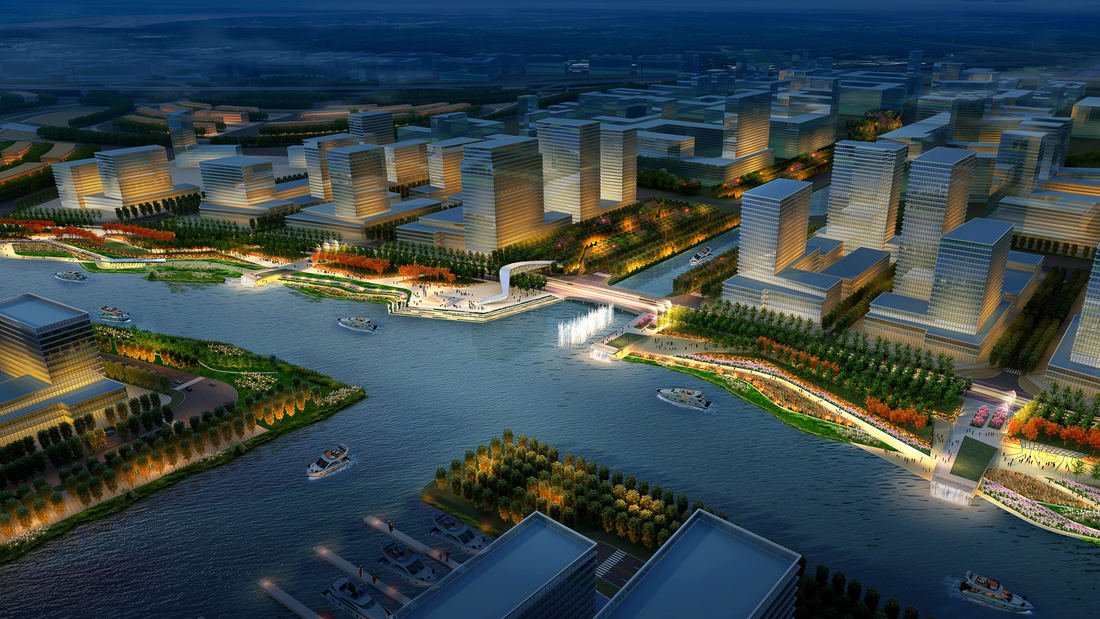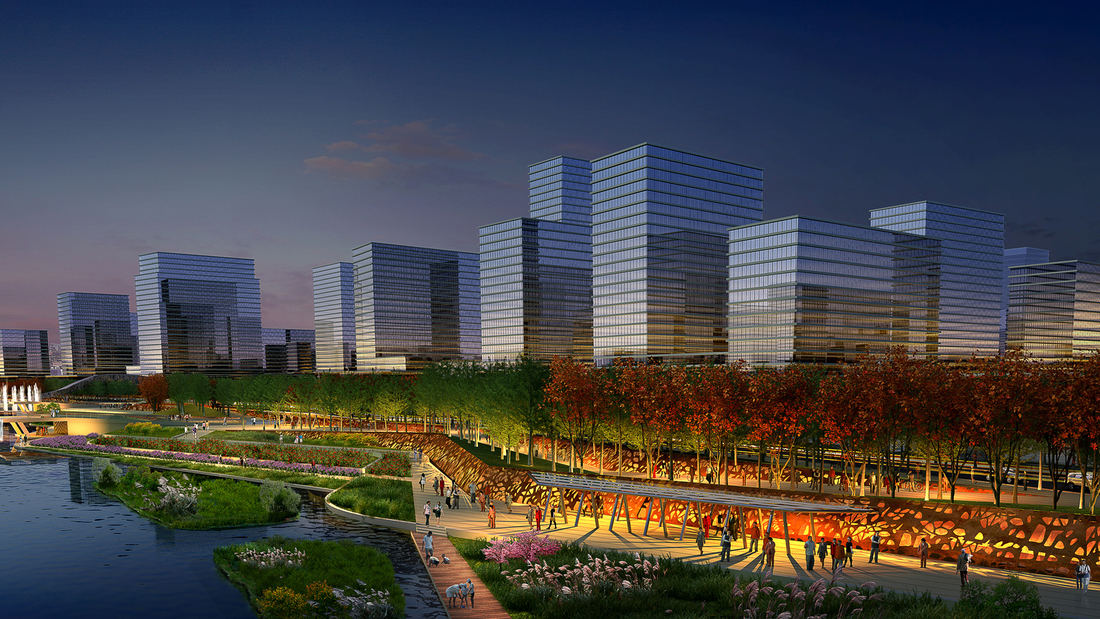SWA participated in a competition reimagining 19-kilometers of the Guipan River waterfront in Shunde, China. While the Pearl River Delta is one of the fastest growing regions of Southern China, one of the many casualties of this growth was the delta itself. Presently, Shunde has a growing flooding problem enhanced by channelizing, condensing, and containing the river system. What was once a healthy delta with countless braided river ecologies has now been constrained into 3 river systems. SWA’s design for the Guipan waterfront reflects the local Linnan waterway and “mulberry-and-fish-pond” agricultural system as the typology of new wetlands and park spaces, expressed as a series of wetland filtration ponds. The larger setting for the waterfront park is the 72-square-kilometer master plan previously developed by SWA and focuses on five unique zones: Urban Park, Wildlife Park, Recreation Park, Office Park, and Wetland Park. The concept focuses on restoring the constructed wetlands as the armature for a multimodal city while restoring the wildlife habitats for the larger Pearl River Delta. The plan develops individual islands as pedestrian-scaled mixed-use villages that are linked by a proposed environmental infrastructure of greenbelts, water corridors, rail, trails and a multilayered transportation system. In order to maximize edge surface area and increase opportunities for exchange, the 19-kilometer Guipan River project proposes a braided system of fine-grained waterways to increase filtering capacity and reconnect the new planned City of Shunde to the river. SWA’s design for the site maximizes the social and economic value of the river by emphasizing and expanding its inherent qualities of place, ultimately creating a comprehensive and connected waterfront to rehabilitate and reestablish the Pearl River Delta as a healthy ecological landscape.
Thousand Lantern Lake Park System
Nanhai Citizen’s Plaza and Thousand Lantern Lake Park exemplifies the exciting and innovative opportunities for master planning and urban design in new international communities. The site is located in the newly established city of Nanhai, and consists of a commercial precinct, public parks, and civic buildings arranged around a series of lakes and waterways. ...
Dubai Creek Harbor
Dubai Creek Harbor is a progressive and innovative new neighborhood that aims to respond to environmental concerns with professional, best-practice measures that will ensure an environment that is healthy, accessible, and environmentally responsible.
The storied history, culture, and nature of Dubai Creek serves as the inspiration for the design of Duba...
Gubei Gold Street
SWA was selected to conceptualize, design, and realize a rare find in bustling Shanghai—a pedestrian mall (Gold Street). The corridor occupies three city blocks, is flanked by 20-story high-rise residential towers with retail at street level and book-ended by SWA-designed parks. Creating an iconic presence and enlivening the area, the mall features plazas, fou...
Qatar Public Realm
SWA’s set of illustrative Design Guidelines promotes a public realm that is a relaxed manifestation of the Qatari vernacular landscape, and serve to maintain the locale’s cultural integrity. Unique among the fast-growing areas of the Gulf region, Doha’s landscape reflects a balance of cultural imp...


